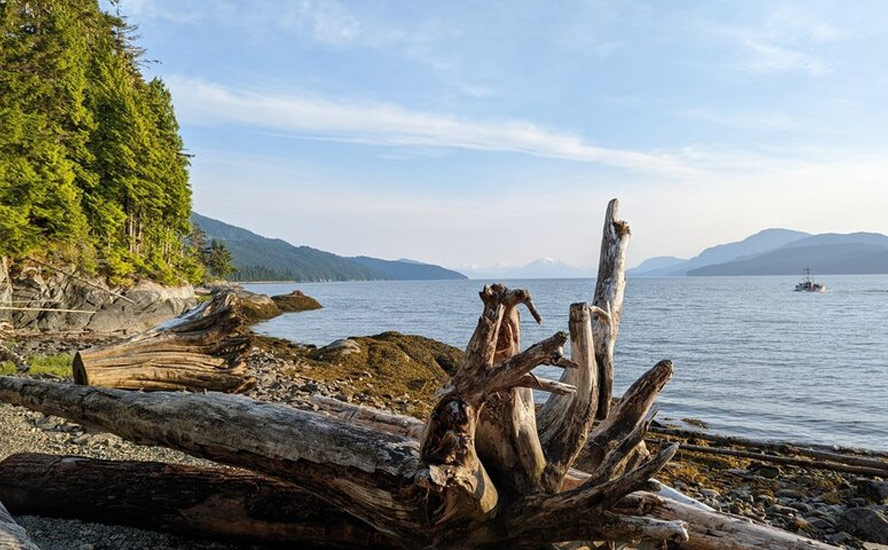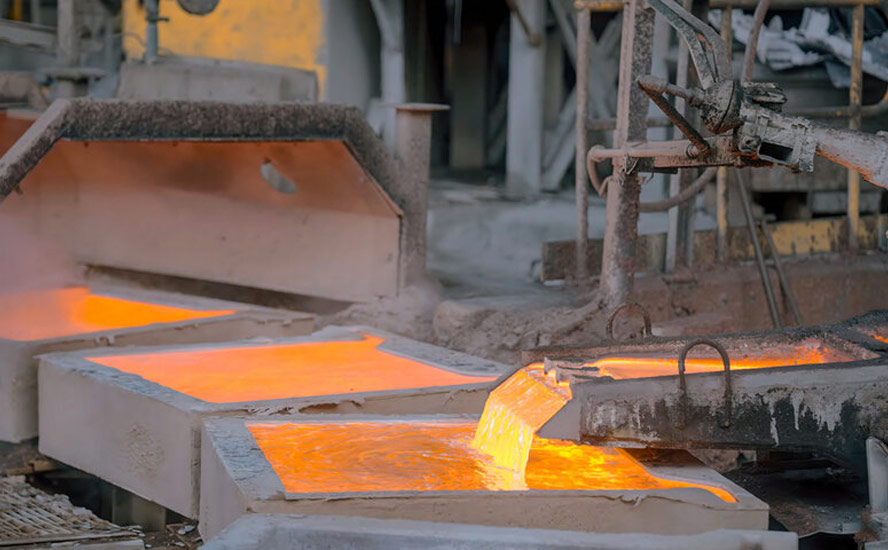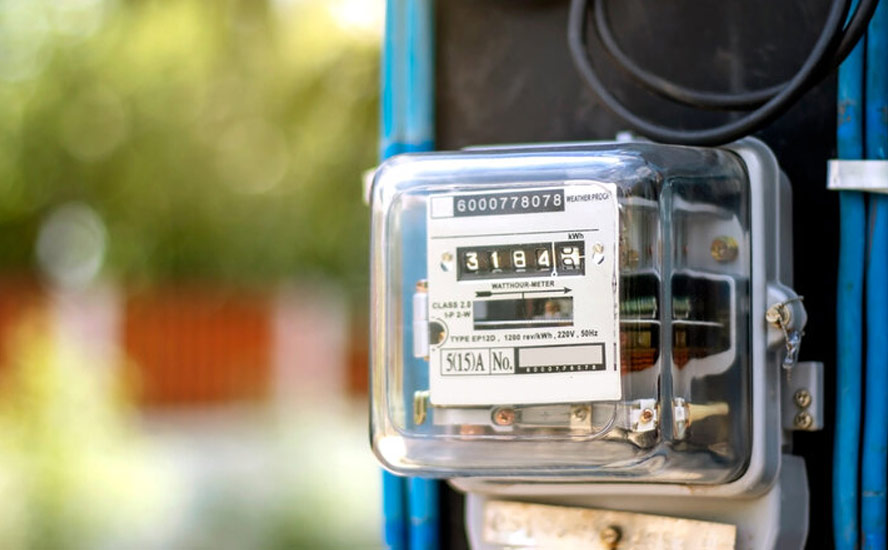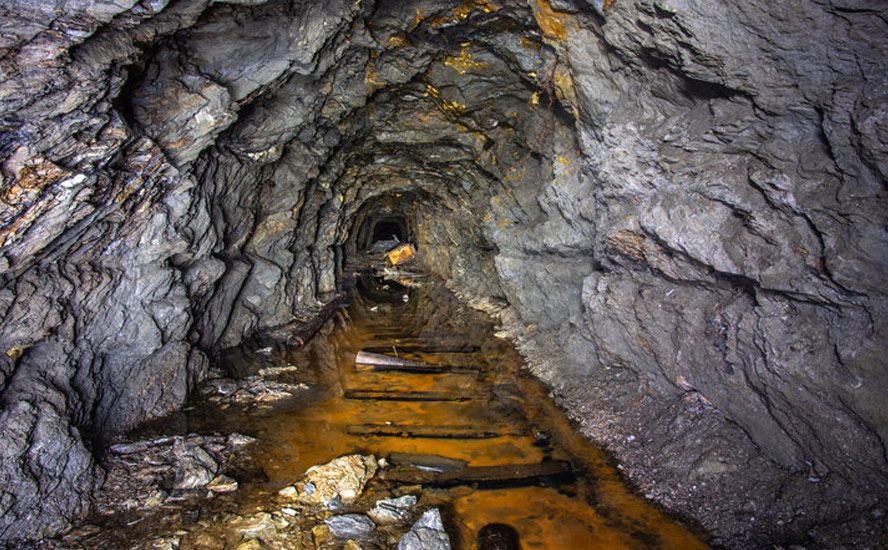Fenelon Gold Camp, Red Lake area plays heating up

2020.07.14
Area plays, where one exploration company makes a discovery, then others rush in to stake ground all around them, are at the very foundation of junior resource markets.
This is mainly due to the mining industry slogan, “the best place to find a mine is in view of an old mine.” Because mineral deposits tend to form in clusters, when a new discovery is made, the odds of finding similar deposition on neighboring properties improves significantly.
Companies that are on trend of the discovery, or even just within the same mining camp, suddenly find themselves with access to capital, as big funders move in to take advantage of the regional gold rush.
As work programs begin, one stock after another begins to rise, often doubling or tripling in value in anticipation of results. Positive assay results bid prices up even higher.
Some noteworthy Canadian area plays are Hemlo (1982), Eskay Creek in 1990, Lac de Gras (1992), Voisey’s Bay in ‘95 and the White Gold Rush in 2010.
More recently, the Pilbara area play saw a number of juniors flock to Western Australia in search of conglomerate gold, trying to replicate the success of first mover Novo Resources, led by experienced geologist/ CEO Quinton Hennigh, and Artemis Resources.
In 2010, Novo was searching for gold-bearing conglomerates within the Hardey Sandstone Formation, part of the Fortescue Group, a thick sequence of ancient sedimentary and volcanic rocks. Historic mines exploited pyritic gold-bearing reefs back in the late 1800s, but little exploration had been done since.
Six years later, Artemis Resources began looking around Purdy’s Reward, south of the town of Karratha, when it came across some unusual gold nuggets in the shape of watermelon pips. The Australian penny stock tripled in value, going from 5 to 16 cents, after announcing it had found unique flat nuggets at Purdy’s Reward.
Artemis and Novo formed a 50-50 joint venture, and investors began salivating when terms like “Witwatersrand-style” (referring to the famous Witwatersrand basin in South Africa – the largest gold host in the world) and “conglomerate-hosted” gold started finding their way onto stock bull-boards.
In the summer of 2017, Novo’s stock shot up 700%, hitting a high of $8.40 on Oct. 2, 2017, with the market cap leaping from less than CAD$100 million to over a billion – achieving the elusive “10-bagger”.
A classic area play scenario, other neighboring companies did well too, including De Grey Mining (+260%). At the height of the frenzy, the stocks of more than a dozen Pilbara gold explorers rose at least 24% within about two weeks.
Fenelon Gold Camp
In November, 2019, Kirkland Lake Gold took over Detour Gold, in an all-share deal valued at CAD$4.9 billion. The agreement gave Kirkland Lake control of the Detour Lake mine in northeastern Ontario, a 600,000-oz per year producer with around 20 more years of mine life.
Since then, a number of gold exploration companies have set up in the area east of the Detour Lake mine, looking to hit pay dirt in an emerging area play – the Fenelon Gold Camp.
Fenelon is in the highly prospective Detour Gold Trend, situated within the Abitibi Greenstone Belt that runs through northern Quebec.
The first mover in the region, Wallbridge Mining (TSX:WM), earlier this year merged with Balmoral Resources.
The acquisition has given the company significant upside to its flagship Fenelon Gold Project, which Wallbridge has been aggressively exploring since 2016, by adding Balmoral’s Detour-Fenelon Gold Trend Project. The 739 sq km trend, running east along a major structural break from the open-pit Detour Lake gold mine, hosts the company’s Fenelon deposit (Main Gabbro, Area 51 and Lower Tabasco-Cayenne) and six other assets – Detour East, Doigt, Martinière, Harri, Jérémie and Grasset.
Last year WM completed just over 100,000 meters of drilling and took a 33,000-tonne bulk sample; another 80,000-100,000m are planned for 2020. The goal is to complete a maiden resource estimate, targeting +1Moz, by mid-2021.
Wallbridge recently announced the first assay results from its 2020 program at Fenelon. Shut down for two months due to covid-19, the company now has six drill rigs back on the property, focused on three mineralized areas – Main Gabbro, Tabasco-Cayenne, and Area 51.
At Main Gabbro, in-filling drilling continues to define high-grade shoots near existing mine workings. Highlights were 4.88 g/t Au over 18.95 meters, including 96.90 g/t Au over 0.70m in the Serrano Zone.
Step-out drilling at Tabasco-Cayenne extended the mineralization over 100m down-plunge, including 4.06 g/t Au over 51.70m.
In Area 51, in-fill drilling continues to demonstrate potentially open-pittable zones near surface. The highlight hole hit 15.73 g/t Au over 3.00m in the Andromeda Zone.
Great Thunder Gold (CSE:GTG)
Great Thunder Gold (CSE:GTG), has been quietly buying up properties next to Wallbridge Mining.
Great Thunder Gold started building its position in the Fenelon Gold Camp in February of this year. The first move was to option the Northbound gold property, which is contiguous to Wallbridge’s Fenelon Gold Project. By completing a series of payments, and exploration milestones, GTG can earn a 100% interest in 21 claims totaling 1,162 hectares.
The jewel in Northbound’s crown is the Jeremie Pluton, an underlying intrusive becoming increasingly important at Wallbridge’s contiguous Fenelon property. Wallbridge in 2019 tested strike extensions of known mineralization from the metasediments and metavolcanics and gabbro into the Jeremie Pluton. Drilling has confirmed the extensions of gold-bearing mineralized zones well into the pluton, and the zones appear to be open.
On March 3 Great Thunder more than doubled its land holdings through the purchase of the Northbound Extension. The 1,582-ha property shares a 2.75-kilometer border with its Northbound asset.
The Jeremie Pluton intrusive also lies under the Northbound Extension, and the eastern margin of it is beneath Wallbridge’s Fenelon Gold Project.
The Jeremie Pluton contact is among the most promising areas for discovery potential. Last year, Wallbridge drill-tested the 4-kilometre strike length of the contact, which trends northwest onto Great Thunder’s Northbound property.
Drill Hole FA-19-089 successfully extended the target northward, with 83.18 grams per tonne gold over half a meter. A second hole 500m northwest of the gold system’s western border resulted in 5.05 g/t over 1.96m. Wallbridge’s bulk sampling program, completed last year, yielded 33,323 tonnes at a high-grade 18.49 g/t gold.
Not surprisingly, Great Thunder Gold has started its 2020 exploration program at properties close to where Wallbridge and Balmoral found success at the drill-bit.
In early June the company announced Northbound and Northbound Extension – both are adjacent and on-trend with Wallbridge’s Fenelon deposit and Balmoral’s new Reaper discovery – would be the focus.
“We will start with geophysics so we can get a better understanding of the magnetic/geological strike and features of our two properties,” said Great Thunder’s lead geologist, Donald Théberge, in a news release.
GTG’s technical team is paying close attention to what is happening at Wallbridge.
The company’s Northbound property is directly connected to Wallbridge’s Fenelon deposit, and shares a 2.75-kilometer border with the Northbound Extension. All three properties have the Jeremie Pluton in common.
Wallbridge has been drilling further to the northwest and has stated on many occasions they feel the mineralized trend is heading in the same direction; the theory is the source of the gold is the Jeremie Pluton.
Wallbridge drilled a total of 101,484 metres in 369 surface and underground holes to the end of 2019. The company has significantly expanded the footprint of the Fenelon gold system to 2 km of strike length, 600 meters of corridor width along the Jeremie Pluton and 850 meters depth confirmed.
WM now states that in Area 51, in-fill drilling continues to demonstrate potentially open-pittable zones near surface.
“With several potentially bulk mineable zones showing good continuities near surface, an open pit component to a future resource is starting to become more and more tangible,” said Attila Péntek, Wallbridge’s VP, Exploration, in the July 13 news release.
An intriguing thought: Could those open-pittable zones extend northward, onto Great Thunder Gold’s Northbound and Northbound Extension properties? We will find out in the fall, when GTG starts drilling them.
Red Lake 2.0
In the Red Lake Mining District of northwestern Ontario, around 30 million gold ounces have been pulled from 29 mines since the 1930s. Past and current producers include the Campbell, Cochenour, Red Lake, Madsen and Starratt Olsen mines.
Exploration in the Red Lake camp has been re-energized with the success of Great Bear Resources (TSX-V:GBR) and the numerous high-grade gold discoveries on their Dixie property. Other active neighbors include Silver Dollar Resources (CSE:SLV), BTU Metals, who announced last December they had staked a large claim package adjoining the northern boundary to expand their Dixie-Halo property, where they are drilling a potential Cu-Ag-Au VMS discovery called the TNT Target; and Golden Goliath Resources, whose Kwai property has been found to repeat the same sequence of rocks that hosts the LP Zone on Great Bear’s Dixie property.
Great Bear’s stock has been junior gold investing’s belle of the ball, as the company hit discovery after discovery at Dixie. From $0.50 a share in the spring of 2018, GBR has leapt 375%, to a June 1, 2020 all-time high of $19.27/sh.
Last month, the drills unearthed yet another big find at the project. In the new “Arrow” zone, a drill hole hit three zones of gold mineralization including a 15-meter-wide interval containing high-grade visible gold in quartz veins.
The occurrence of gold-bearing quartz veins with red-brown hydrothermal biotite alteration is a key characteristic of the High Grade Zone discovery at the Red Lake gold mine, first discovered by Goldcorp and now operated by Evolution Mining.
Great Bear is currently in the throes of a fully-funded (the company is sitting on $48 million in cash) CAD$21 million exploration program at Dixie, with 180 holes of a planned 300 to be completed this year.
Although GBR had to scale back its drilling due to covid-19, the junior explorer is back at full strength. The addition of two rigs, back up to five, represents a 67% increase in drill activity over recent levels.
“This will accelerate our grid drill program at the LP Fault, and allow ongoing simultaneous exploration of additional targets across the property,” Chris Taylor, Great Bear’s chief executive, told investors in a July 13 statement.
Silver Dollar Resources (CSE:SLV)
Silver Dollar Resources has two properties, Longlegged Lake and Pakwash Lake, in the Red Lake District.
Both appear to have similar geology to Great Bear and other juniors working this new “Red Lake 2.0” area play.
At Longlegged Lake, previous work by Laurentian Gold found anomalous gold in soil samples along the Pakwash Lake Fault Zone – a major regional structure.
A sequence of metamorphosed felsic tuffs and sediments were found to occur adjacent to a regional basalt unit that can be traced through BTU Metals’ property north, along a regional fold structure, together with an adjacent conglomerate which is identical to the northerly outcrops. This basalt unit also occurs along the south side of the LP structure shown on sections by Great Bear Resources.
Therefore the Longlegged property has been found to host a repetition of the same sequence of rocks that hosts the LP Zone on the Dixie Lake property. Both the Pakwash Fault and LP Fault are outlined as deep-seated structures, according to regional seismic profiling by the Canadian government, and are similar in nature to the faults associated with the major mines at Red Lake.
In the spring of 2019, Silver Dollar completed a helicopter high-resolution magnetic survey that identified northeast-southwest trending geological features interpreted to be the deep-seated Pakwash Lake Fault Zone.
The curved linear features identified by the 1,837 line-km survey (@ 25-meter spacings), could also relate to shearing and folding, where dilation zones may have enabled mineralization to occur.
CEO Mike Romanik said the mineralization at Longlegged Lake is likely to be hosted in splays off the main crustal fault, which extends over 12 km deep. The idea is to try and match the very positive geophysical survey with geochemical results at surface.
Fieldwork currently underway includes soil sampling, geological mapping and prospecting to follow up on the key structures identified by the MAG survey.
The property is fully permitted and ready to drill once targets are identified.
Conclusion
Area plays are the stuff of dreams, as far as resource investors are concerned. The odds of a gold junior hitting a discovery hole, building a resource and getting bought out by a major gold miner are slim. But if the company’s project(s) happen to be surrounded by well-mineralized neighbors, their chance of success goes up dramatically.
Area plays are ignited by first movers. Once a discovery has been made, any explorer working in the right area code hits the radar screens of institutional investors. Lenders willing to take a shot on a quick return on investment provide them with capital for drilling.
Cashed up, work programs are initiated, as retail investors hold their collective breath for results.
This is exactly what we see happening in two red-hot Canadian area plays – the Fenelon Gold Camp and the Red Lake gold district.
At its Fenelon Gold Project, Wallbridge Mining just hit it out of the park with initial assays on a massive drill program up to 100,000m. Its neighbors are watching closely. Great Thunder Gold’s Northbound property is directly connected to Wallbridge’s Fenelon deposit, and shares a 2.75-kilometer border with the Northbound Extension. All three properties have a major structure, the Jeremie Pluton intrusion, in common.
Great Thunder Gold rose 5.49% Monday, on Wallbridge’s news of high-grade hits at Main Gabbro, Tabasco-Cayenne and Area 51.
Over at Red Lake, area play anchor Great Bear Resources continues to reel off successes, most recently announcing discovery of a type of mineralization unique to the famously high-grade Red Lake gold complex. Between the two principal mines, Campbell and Red Lake, historic ore grades averaged about 22 grams per tonne.
The gold-bearing quartz veins with red-brown hydrothermal biotite alteration, found in June by Great Bear, are a key characteristic of the High Grade Zone discovery at the Red Lake mine.
Silver Dollar Resources’ Longlegged Lake property hosts a repetition of the same sequence of rocks that hosts the LP Zone on the Dixie Lake property. Both the Pakwash Fault and LP Fault are outlined as deep-seated structures, similar to the faults associated with the major mines at Red Lake.
We don’t yet know whether Silver Dollar has a Dixie look-alike in Longlegged Lake – the project is slated to be drilled in the fall – but crews are working to nail down drill targets, conducting soil sampling, geological mapping and prospecting to follow up on the key structures identified by a MAG survey.
We do know that investors are paying attention to this emerging area play, with SLV gaining 4 cents (+6.78%) Monday. Shareholders should be good to ride Great Bear’s coat-tails right up until Silver Dollar makes a discovery of their own this fall.
This is the start of two huge area plays I see having both strength and longevity; any junior working in either district is going to do well.
I expect a shed-full of news to come out of both the Fenlon Gold Camp and “Red Lake 2.0” for the rest of this year and well into next, as drill results from the first movers and their neighbors continue to roll in.
Great Thunder Gold
CSE:GTG
Cdn$0.79, 2020.07.13
Shares Outstanding 26,406,660m
Market cap Cdn$20.86m
GTG website
Silver Dollar Resources Inc.
CSE:SLV
Cdn$0.63, 2020.07.33
Shares Outstanding 19,600,001m
Market cap Cdn$12.34m
SLV website
Richard (Rick) Mills
aheadoftheherd.com
subscribe to my free newsletter
Ahead of the Herd Facebook
Legal Notice / Disclaimer
Ahead of the Herd newsletter, aheadoftheherd.com, hereafter known as AOTH.
Please read the entire Disclaimer carefully before you use this website or read the newsletter. If you do not agree to all the AOTH/Richard Mills Disclaimer, do not access/read this website/newsletter/article, or any of its pages. By reading/using this AOTH/Richard Mills website/newsletter/article, and whether or not you actually read this Disclaimer, you are deemed to have accepted it.
Any AOTH/Richard Mills document is not, and should not be, construed as an offer to sell or the solicitation of an offer to purchase or subscribe for any investment.
AOTH/Richard Mills has based this document on information obtained from sources he believes to be reliable but which has not been independently verified. AOTH/Richard Mills makes no guarantee, representation or warranty and accepts no responsibility or liability as to its accuracy or completeness. Expressions of opinion are those of AOTH/Richard Mills only and are subject to change without notice. AOTH/Richard Mills assumes no warranty, liability or guarantee for the current relevance, correctness or completeness of any information provided within this Report and will not be held liable for the consequence of reliance upon any opinion or statement contained herein or any omission. Furthermore, AOTH/Richard Mills assumes no liability for any direct or indirect loss or damage or, in particular, for lost profit, which you may incur as a result of the use and existence of the information provided within this AOTH/Richard Mills Report.
AOTH/Richard Mills is not a registered broker/financial advisor and does not hold any licenses. These are solely personal thoughts and opinions about finance and/or investments – no information posted on this site is to be considered investment advice or a recommendation to do anything involving finance or money aside from performing your own due diligence and consulting with your personal registered broker/financial advisor. You agree that by reading AOTH/Richard Mills articles, you are acting at your OWN RISK. In no event should AOTH/Richard Mills liable for any direct or indirect trading losses caused by any information contained in AOTH/Richard Mills articles. Information in AOTH/Richard Mills articles is not an offer to sell or a solicitation of an offer to buy any security. AOTH/Richard Mills is not suggesting the transacting of any financial instruments but does suggest consulting your own registered broker/financial advisor with regards to any such transactions
Richard does not own shares of Silver Dollar Resources (CSE:SLV). SLV is an advertiser on his site aheadoftheherd.com
Richard does not own shares of Great Thunder Gold (CSE:GTG). GTG is a paid advertiser on Richard’s site aheadoftheherd.com
Legal Notice / Disclaimer
Ahead of the Herd newsletter, aheadoftheherd.com, hereafter known as AOTH.Please read the entire Disclaimer carefully before you use this website or read the newsletter. If you do not agree to all the AOTH/Richard Mills Disclaimer, do not access/read this website/newsletter/article, or any of its pages. By reading/using this AOTH/Richard Mills website/newsletter/article, and whether you actually read this Disclaimer, you are deemed to have accepted it.


























